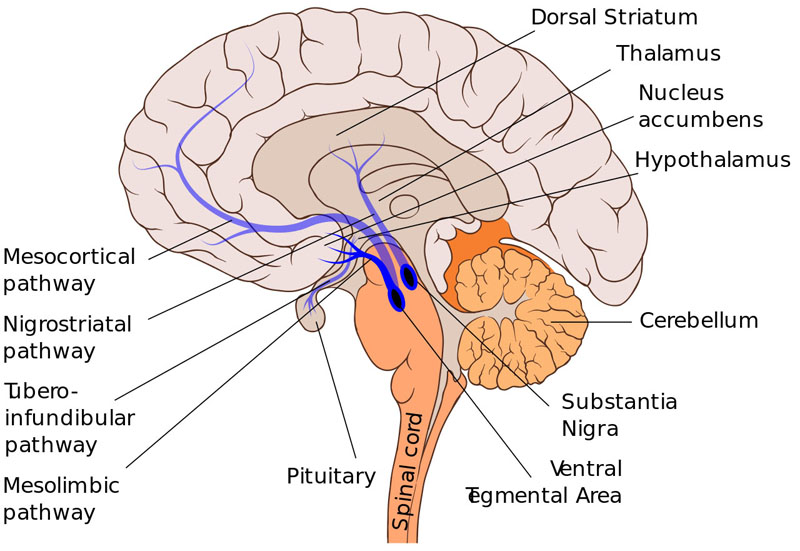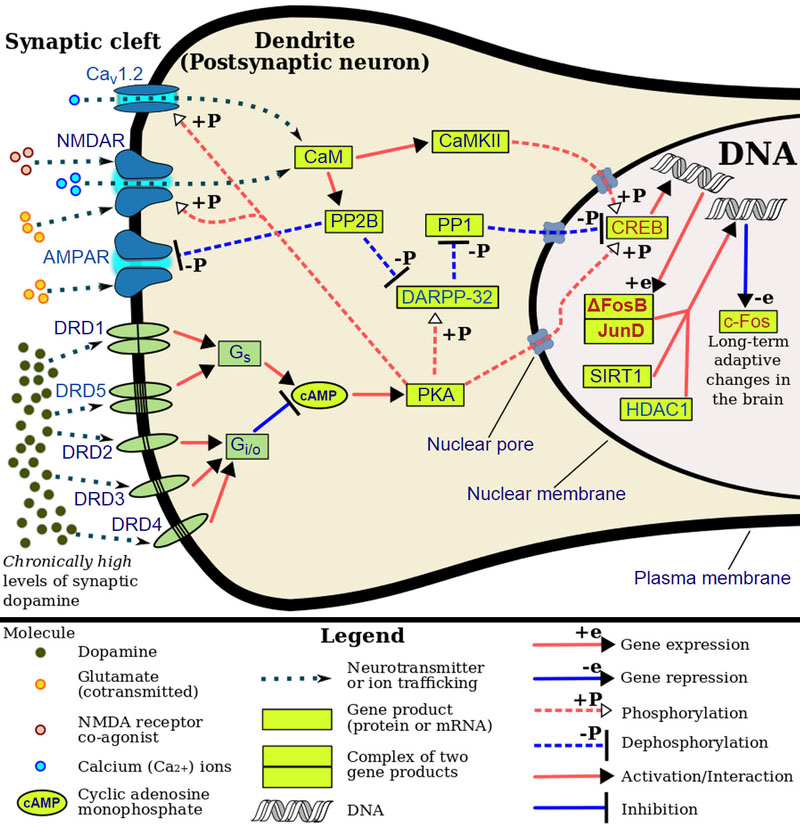Drug Addiction
- Addiction is a state characterized by compulsive engagement in rewarding stimuli, despite adverse consequences. It can be thought of as a disease or biological process leading to such behaviors.
- Dopaminergic pathways are neural pathways in the brain that transmit the neurotransmitter dopamine from one region of the brain to another.
- The mesolimbic pathway (reward pathway) is a dopaminergic pathway in the brain. The pathway begins in the ventral tegmental area of the midbrain and connects to the nucleus accumbens. It is the most significant neural pathway in the brain for addiction.
- The nucleus accumbens is a region in the basal forebrain rostral to the preoptic area of the hypothalamus with significant role in the cognitive processing of aversion, motivation, pleasure, reward and reinforcement learning. It has a significant role in addiction.
- The ventral tegmental area is a group of neurons located close to the midline on the floor of the midbrain. It is the origin of the dopaminergic cell bodies of the mesocorticolimbic dopamine system and is widely implicated in the drug and natural reward circuitry of the brain.
- The ΔFosB splice variant of the FosB protein has been identified as playing a central, crucial (necessary and sufficient) role in the development and maintenance of pathological behavior and neural plasticity involved in both behavioral addictions (associated with natural rewards) and drug addictions.

The dopaminergic mesolimbic pathway in the brain, running from the Ventral Tegmental Area to the Nucleus Accumbens.

This diagram depicts the signaling events in the brain's reward center that are induced by chronic high-dose exposure to psychostimulants that increase the concentration of synaptic dopamine, like amphetamine, methamphetamine, and phenethylamine. Following presynaptic dopamine and glutamate co-release by such psychostimulants, postsynaptic receptors for these neurotransmitters trigger internal signaling events through a cAMP pathway and calcium-dependent pathway that ultimately result in increased CREB phosphorylation. Phosphorylated CREB increases levels of ΔFosB, which in turn represses the c-fos gene with the help of corepressors; c-fos repression acts as a molecular switch that enables the accumulation of ΔFosB in the neuron. A highly stable (phosphorylated) form of ΔFosB, one that persists in neurons for one or two months, slowly accumulates following repeated exposure to stimulants through this process. ΔFosB functions as 'one of the master control proteins' that produces addiction-related structural changes in the brain, and upon sufficient accumulation, with the help of its downstream targets (e.g., nuclear factor kappa B), it induces an addictive state.